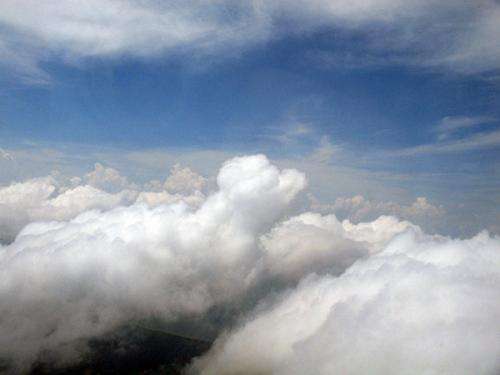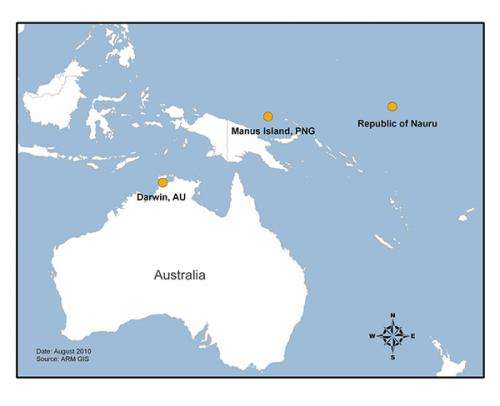A decade of data discloses influence of clouds on tropical energy balance

(Phys.org) —A cloud's class and status matters to the climate. That's what researchers at Pacific Northwest National Laboratory found when they separated tropical clouds into seven categories. Clouds with low bases are more influential than high clouds because the low-base clouds have a greater effect on the amount of solar energy that reaches the ground. They also compared the clouds' effects on the tropical energy balance using data collected from ten years of ground-based observations at U.S. Department of Energy (DOE) sponsored locations in the tropical western Pacific region. Their findings show that cloud type is more important than previous satellite-based studies suggest.
A fundamental understanding of Earth system processes is necessary to tackle climate change issues. Solar energy in the tropics plays a large role in driving the atmosphere's circulation, global bands of energy and moisture that affect weather and climate. Scientists are working to understand exactly how tropical clouds affect the amount of energy coming in and going out of the atmosphere (see sidebar, Cloud Forcing). With an understanding of how each cloud type affects the energy balance, researchers can extend their assessments using satellite data that can classify clouds over broader areas.

Beginning in 1996, the DOE's Atmospheric Radiation Measurement (ARM) Climate Research Facility established three long-term measurement sites in the tropical western Pacific region. Sites were located in Darwin, Australia; Manus Island, Papua New Guinea; and Nauru Island east of Manus in the Pacific Ocean. This region is important in driving global atmospheric circulation. The three sites combined have cloud types that are representative of the entire region.
The researchers used data collected from surface radiation and meteorological instruments to understand the cloud radiative forcing effect at the three sites. They also used ground-based remote-sensing measurements of clouds to examine the impacts of different types of clouds on the shortwave and longwave radiation at ground surface. The study also assessed the radiative impacts of the Australian monsoon and dry seasons for Darwin, and the El Niño/La Niña periods for the equatorial Manus Island, Papua New Guinea and Nauru Island sites.
This study will be used to evaluate model results using cloud type to improve model performance. Previous modeling studies focused on the energy budget at the top of the atmosphere, but ground surface energy budgets are just as important. Researchers will continue to examine these impacts in the context of the diurnal cycle for each observational site.
More information: McFarlane, S. et al. 2012. A Climatology of Surface Cloud Radiative Effects at the ARM Tropical Western Pacific Sites. Journal of Applied Meteorology and Climatology. DOI:10.1175/JAMC-D-12-0189.1
Provided by Pacific Northwest National Laboratory



















